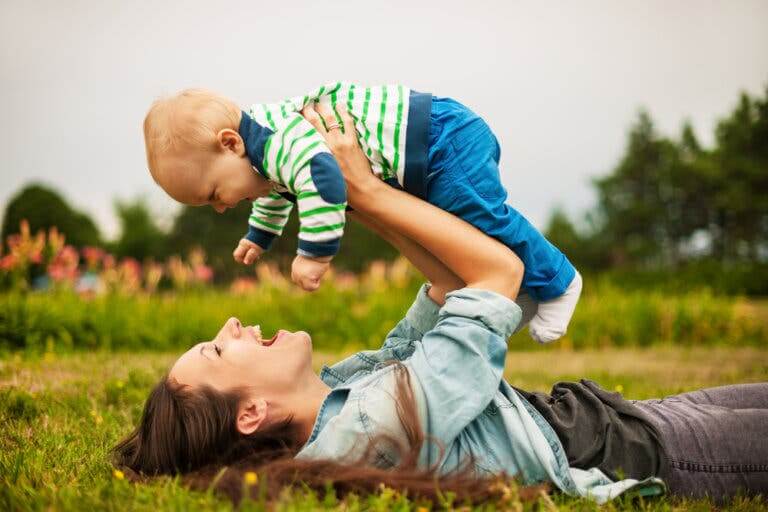Educating from a Child's Perspective

Educating from a child’s perspective means taking into account each child’s evolutionary process and adapting to it. It’s important for us to accompany our child in their development. However, if we want to have a good connection with them, then we must do it from their point of view, and not from ours as adults.
It’s important to establish strong bonds with our children that will help them grow up in a healthy way. We’ll achieve this by respecting the pace they’re maturing at, and by using love and empathy.
Childhood is one of the great treasures of life. The relationship of each child with their parents can either facilitate or impede their healthy development, depending on many interdependent factors.
Educating from a child’s perspective: strong and healthy bonds
We need to build bridges to connect our adult world with the child’s world. We must replace the classic view of the adult model (“I know, you don’t know”) with the healthy and rare exercise of empathy.
The key element during upbringing is our outlook – how, and from what position, we relate to our children. We can differentiate between two types of gaze in order to distinguish the forms of relationship with our child: the vertical and the horizontal.

The vertical perspective
This type of outlook, or perspective, is when the adults guide their child’s development “from above.” The idea here is that you have to “teach the child because they don’t know.”
For example, they have to sleep alone even if they’re crying for their mom, they have to eat everything even if they’re not ready for it, or they have to speak even if they’re not ready to socialize.
With this perspective, the parent “teaches” the child everything, even regarding their natural functions, which their bodies take care of in their own way. This shows that they don’t understand their rhythm of growth and their capacity for self-regulation.
The horizontal perspective
This outlook teaches a child by respecting and empathizing with their own pace of development. The adult looks at things from the child’s level and point of view, and accompanies them in their development.
“To look at things through the eyes of a child means to understand them and know what they’re feeling.”
– Francesco Tonucci, Italian educator and illustrator –
If we’re educating from a child’s perspective, we’ll be able to see when they’re ready to take each step in their development. We won’t be tempted to force them to reach goals that they’re not ready for.
A child’s needs versus the adult’s needs
Children, until they’re 3 years old, don’t understand reasoned explanations. Up until that time, they simply wait for us to respond to their needs in order to feel safe by our side.
In this sense, the essential key to understanding their emotional needs is to do so with the patience, respect, and emotional support that they need during their first six years of life. It’s at this stage when their character is formed, along with strong bonds with the parents.
The child’s perspective: differences between the needs of the child and the adult
Adults and children have completely different needs for one simple reason: maturity. Children still haven’t reached an adult’s maturity.

- Children depend on us for their growth, whereas we need them to grow up as soon as possible so that they can become independent.
- They need mom or dad in order to sleep and feel safe, whereas we need them to sleep alone.
- Children need to play non-stop, because that’s their way of learning, whereas we need to rest when we finish our work.
- Our children need to talk non-stop and for us to listen to their concerns whereas we often need a little silence after a hard day’s work.
We could go on and on with all the differences in needs between children and adults. Our needs are often completely opposed, and sometimes even irreconcilable. Because they live from the point of view of pleasure, they need to feel good and have their needs met, whereas we live from the perspective of duty.
A child’s emotional needs
However, we mustn’t forget that, in order to grow up healthily and safely, children need to have their emotional needs covered. When they cry, their parents need to attend to their crying. We need to have physical contact with them and respect their rhythm of development.
“The strength or weakness of the child’s being is the result of the caregiver’s ability to respond appropriately to the baby’s absolute dependence in the early stages of life.”
– Donald Woods Winnicott –
We can ensure that our children become rational and caring adults in the future by educating them from a child’s perspective. We can achieve this by putting ourselves in their shoes, respecting their pace of development. In this way, they’ll grow up to be healthy and happy children.
